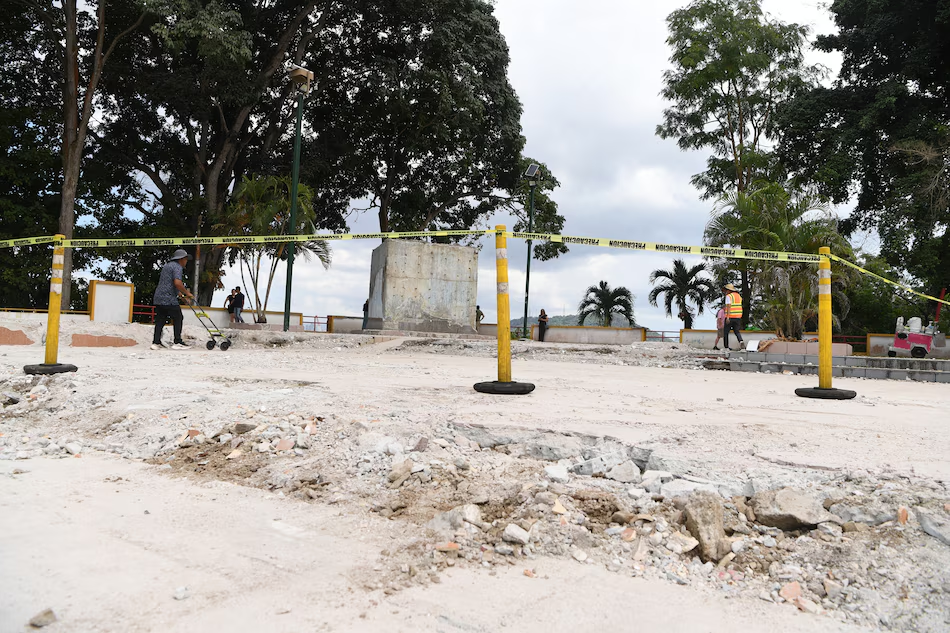WORLD VIEW: Looking for cities built for man

By Jonathan Power
“WHAT did these vain and presumptuous men intend? How did they expect to raise their lofty mass against God, when they had built it above all the mountains and clouds of the earth’s atmosphere?”
This is St. Augustine writing about Babylon in his “City of God”. In more modern times Jonathan Raban has written in “Soft City”, “The city has always been an embodiment of hope and a source of festering guilt: A dream pursued, and found vain, wanting and destructive.”
St. Augustine wrote the “City of God” in a state of sorrowful contemplation. The city of man, he believed, ought to be a harmonious reflection of the City of God. In actuality it is vulgar, lazy and corrupt, a place so brutish that it lacks even the dignity of the satanic. St Augustine would surely write the same way if reincarnated in Atlanta, Johannesburg, Mumbai or Riyadh.

Johannesburg? Who can forget Alan Paton’s dark description of that city in his beautiful but painful novel, “Cry the Beloved Country”. The old, livable, city got overtaken in the 1950s. “We shall live from day to day. And put more locks on our doors, and get a fine, fierce dog when the fine, fierce bitch next door has pups, and hold on to our handbags more tenaciously, and the beauty of the trees by night and the raptures of lovers under the stars, these things shall we forgo. We shall forego the coming home drunken through the midnight streets and the evening walk over the starlit veldt. We shall be careful, and knock this off our lives and that off our lives, and hedge ourselves about with safety and precaution.”
Johannesburg, it is true has its own peculiar burden, but which of us city dwellers would be brave enough to say this does not touch some primeval instinct we have that tells us this is the way our own city might go, if indeed it has not already gone, as many have the last 20 years.
However, there is another instinct, close to us too, that orders us to construct a better city. Plato did this in his Republic. Napoleon 111 asked Baron Haussmann to build a beautiful Paris. Le Corbusier tried with his radiant city. But be warned by the latter. Dreamers can be dangerous.
Recall Le Corbusier’s 12 cardinal principles:
- The plan: totalitarian
- The death of the street
- Classification of simple speeds and complex speeds.
- Arrangement made to an agreement on imminent laws of machine civilization.
- The mobilization of the soil.
- Housing considered as an extension of the public services.
- The civilization of the road replacing the civilization of the railway.
- The radiant city.
- The radiant countryside.
- The twilight of morning.
- The essential joys, the satisfaction of psychophysiological need, collective participation and individual liberty.
- The renaissance of the human body.
High thought? Raban calls it repellent. Much of it is. Le Corbusier’s vertical city with its skyscraper tower blocks of pre-stressed concrete must be man’s worst attempt at the soulless “lofty mass” since Babylon.
Why do politicians and planners build cities like Dubai and Qatar, all busy roads, no sidewalks for walking and no bicycle lanes? Didn’t they learn about Los Angeles’s mistakes of half a century ago?
Towering infernos
 In Britain, the country is still reeling from a fire that engulfed a high-rise in January, built for workers in London. At the other end of the scale was the fire in Abu Dhabi at the luxury flats last month in one of the world’s tallest buildings.
In Britain, the country is still reeling from a fire that engulfed a high-rise in January, built for workers in London. At the other end of the scale was the fire in Abu Dhabi at the luxury flats last month in one of the world’s tallest buildings.
Years ago I made a BBC documentary “It’s Ours Whatever They Say”, that chronicled the fortunes of young boys who used to play on the roof of a tall block of working class flats. One boy fell off and died. (The film won the Silver Medal at the Venice Film Festival.)
Increasingly in Europe and North America, city governments are realizing their folly; that renovation of old houses at street level or building ordinary houses are a better bet than wholesale slum clearance and acres of new blocks. Not only is it often cheaper it is quicker. When joined with imaginative schemes to plant trees, to reduce traffic flow and build bike lanes it provides an earthbound style of living that makes many of the high-risers jealous.
Most working class people think they have been vertically ghettoized. Most middle-class people would never live in them.
I lived in India for a while. I’ve seen Mumbai mushroom upwards while, in-between the towers, shanty towns thrive.
 In Calcutta there are no tower blocks and few homeless. The big shanty towns have been destroyed, and the city’s stylish, graceful, houses and mansions, inherited from the British, are being renovated.
In Calcutta there are no tower blocks and few homeless. The big shanty towns have been destroyed, and the city’s stylish, graceful, houses and mansions, inherited from the British, are being renovated.
Parks with boys playing cricket and parents walking their children abound. Crime is the lowest of all the world’s large cities.
A little less architectural vanity, a little less presumption, and urban man will be a lot happier.





